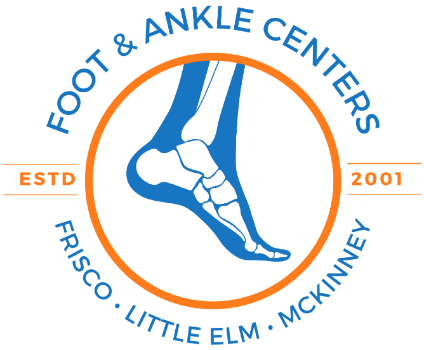Understanding Nerve Entrapment at Foot & Ankle Centers
May 17, 2025 | By: Foot & Ankle Centers of Frisco and Plano
Did you know that around 20% of the population experiences some form of nerve entrapment at some point in their lives? Understanding nerve entrapment is crucial not only for those suffering from pain but also for anyone who wants to maintain healthy foot and ankle function. Whether it's tarsal tunnel syndrome, neuromas, or pinched nerves, identifying the cause is key to relieving pain and restoring mobility. In this comprehensive guide, we will explore what nerve entrapment is, its various forms, causes, symptoms, and available treatments, ensuring you have all the knowledge you need to protect your nervous system and overall well-being.
What Is Nerve Entrapment?
Nerve entrapment refers to a condition in which a nerve becomes compressed or irritated, leading to pain, numbness, or weakness. While it can occur in many areas of the body, nerve entrapment in the foot and ankle is particularly concerning due to the essential roles these areas play in mobility and overall quality of life.
Common Types of Nerve Entrapment
1. Tarsal Tunnel Syndrome: This condition happens when the posterior tibial nerve gets compressed as it passes through the tarsal tunnel, located near the inner ankle. Symptoms often include tingling, burning, or a sensation of pins and needles in the sole of the foot.
2. Morton’s Neuroma: A painful condition affecting the ball of your foot, Morton’s neuroma occurs when a nerve in the space between the third and fourth toes gets compressed. Symptoms might include sharp pain or numbness in the affected toes upon walking or standing.
3. Achilles Tendonitis: Although primarily an overuse injury, pressure on the nearby nerves can cause entrapment, leading to pain that may radiate to the foot and ankle.
4. Peroneal Nerve Entrapment: This form of entrapment occurs near the knee but can cause symptoms in the lower leg and foot, including weakness and a tingling sensation.
Causes of Nerve Entrapment
- Anatomical Factors: Some individuals may have anatomical structures that predispose them to nerve entrapment.
- Injury or Trauma: Accidents or falls can impact the nerves directly or indirectly, leading to entrapment.
- Repetitive Motion or Overuse: Activities that require repetitive use of the feet or ankles, such as running or standing for prolonged periods, can lead to nerve issues.
- Footwear: Tight or poorly fitted shoes can contribute to nerve entrapment by applying too much pressure on particular areas of the foot.
Symptoms to Watch For
Understanding the signs and symptoms of nerve entrapment can help you identify potential issues early on. Common symptoms include:
- Tingling or numbness in the feet or toes
- Sharp, burning pain that may radiate to other areas
- Weakness in foot muscles
- Increased sensitivity in certain areas of the foot
- Pain that worsens with activity or weight-bearing activities
Diagnosing Nerve Entrapment
Proper diagnosis is crucial for effective treatment. Here are the methods healthcare professionals might use:
- Physical Examination: Assessing for symptoms and checking for pressure on nerves.
- Nerve Conduction Studies: Testing the speed of electrical signals in nerves can give insights into their functionality.
- Electromyography (EMG): This test measures the electrical activity of muscles to see if nerves are functioning properly.
- Imaging Studies: X-rays, MRIs, or ultrasounds may be utilized to observe any underlying structural issues.
Treatment Options for Nerve Entrapment
1. Conservative Treatments:
- Rest: Giving your body time to heal and reducing activities that may contribute to nerve compression.
- Ice Therapy: Applying ice may help reduce swelling and relieve pain.
- Physical Therapy: Targeted exercises can help strengthen muscles, improve flexibility, and reduce pressure on entrapped nerves.
- Over-the-Counter Medications: Non-steroidal anti-inflammatory drugs (NSAIDs) can help in managing pain.
2. Custom Footwear or Orthotics:
- Specially designed shoes or custom orthotics can provide extra support and alleviate pressure points in the feet.
3. Injections:
- Corticosteroid injections can help reduce inflammation around compressed nerves.
4. Surgical Intervention:
- In some cases, surgery may be necessary to release the pressure on the nerve.
Preventing Nerve Entrapment
Here are some key strategies to help prevent nerve entrapment:
- Wear Proper Footwear: Ensure that your shoes provide adequate support and allow for proper circulation.
- Maintain a Healthy Weight: Extra weight can put unnecessary stress on your foot and ankle nerves.
- Practice Good Foot Hygiene: Keep your feet clean and dry, as well as check for any changes.
- Stretch Regularly: Incorporate stretching into your routine to maintain flexibility and reduce the risk of nerve compression.
Seeking Help
If you're experiencing symptoms of nerve entrapment, don’t hesitate to seek professional evaluation. A prompt diagnosis can lead to early intervention and effective treatment, enabling you to regain full function and avoid long-term damage.
So Where Do We Go From Here?
Think of your nerves not just as pathways but as essential components of your overall health and well-being. Understanding nerve entrapment empowers you to take preventative measures, recognize symptoms early on, and seek treatment when necessary. By following recommended practices and being proactive about your foot and ankle care, you can significantly improve your quality of life.
If you suspect you might be struggling with nerve entrapment, don’t ignore the warning signs! Book an appointment today to get the help you need.


Leave a comment
0 Comments